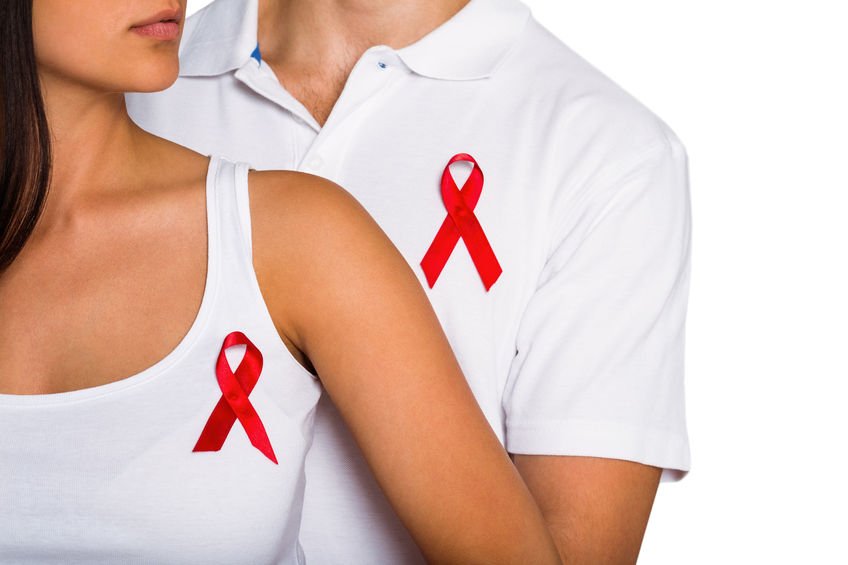
If the questions about HIV/AIDS are to be ranked according to the number of questions, such questions as [whether AIDS will occur] will undoubtedly win the [championship].
From the beginning of the study of HIV virus to the work of HIV-related counseling in some public welfare organizations, the author can’t remember how many times he has answered similar questions-[will kissing spread AIDS] [will oral fights not get AIDS] [what if the condom breaks]…
Questioners often have [fear of AIDS] emotions after having intimate behaviors with others. Although most people know that HIV is mainly transmitted through sex, mother-to-child and blood, [sexual] transmission is the most concerned thing in daily life.
So, if a person [accidentally] has high-risk sex with others, what is his chances of contracting HIV?
Results of scientific research
It is not easy to study the exact probability of HIV sexual transmission. Researchers need to recruit a group of normal people and follow up the way, frequency, condom use and HIV infection of their sexual partners for a long period of time.
1. Study the existing problems
It is conceivable that whether it is because the time is too long to remember clearly or because it is deliberately concealed, the results of such research are not accurate, and the results obtained from different studies can vary greatly.
In addition, it is difficult for ordinary people to know whether their sexual partners are HIV-infected or not, especially when the number of sexual partners is relatively large.
2. The improved study can estimate the approximate probability of propagation.
To solve these problems, researchers need to recruit a group of HIV infected persons with fixed negative partners, check the infection status of negative partners after a period of time, and combine the research results through statistical means to estimate the approximate probability of sexual transmission of HIV.
3. Behaviors at risk of sexual transmission of HIV
If the risk of sexual transmission of HIV is ranked according to unprotected sexual behavior, the general result is as follows:
1. Anal sex (inserted party, [received])
2. Anal sex (insertion, [attack])
3. Vaginal intercourse (inserted party)
4. Vaginal intercourse (insertion)
5. Other sexual behaviors (oral sex, masturbation, etc.)
However, even for the [minor infection] with the highest risk of infection, the probability of single transmission is only about 1.4% (one transmission per 71 exposures), and the results of male and female are similar [1]. However, the probability of infection for the insertion of vaginal intercourse is only 0.04%.
The risk of population transmission is low, which is [0] or [1] in individuals.

So, the problem is, aren’t there many cases [winning the bid at one time]? If the risk of HIV transmission is really so low, then why are more and more people infected with HIV now?
When evaluating whether a certain behavior will spread HIV, there are many other factors that need to be considered together in addition to the general probability. [Transmission Risk] is for the group, and for the individual, it is the relationship of [1] or [0].
It is true that some people are infected once they are not careful, and at the same time some people [walk along the river without wet shoes]. Probability is like God rolling dice. Being thrown is also a helpless thing.
Influencing Factors of Communication Risk
Many factors are not included in these [average] figures.
1. Individual factors
For example, suffering from other sexually transmitted diseases, the virus content in the infected person is very high, the man is not circumcised, the woman is in menstrual period, sexual intercourse is too intense, sexual intercourse time is too long, enema before anal intercourse, brushing teeth before and after oral intercourse or oral ulcer damage, etc., will significantly increase the risk of HIV transmission.
For example, bacterial vaginitis will increase the risk of HIV infection in women by 8 times, while the risk of transmission will increase by 2-3 times for every 10 times higher virus content in infected persons.
2. Increased risk of multiple exposures
Although the risk of single sexual transmission does not seem to be high, multiple exposures will undoubtedly increase the risk of transmission. In other words, the closer you get to HIV and the more frequent your exposure, the greater the probability of being stuck to HIV. If a woman has 100 unprotected vaginal intercourse with an HIV infected person, the cumulative probability of infection can be as high as 10%, regardless of other [bonus] factors.
3. [Points Reduction Factor]
There are [bonus] factors, and naturally there are also [score reduction] factors: treatment of other sexually transmitted diseases, reduction of viral load in the body by taking antiviral drugs, circumcision, adequate lubrication, effective pre-exposure prevention and post-exposure prevention (see other data for details), etc. All these measures have been proved to be able to effectively reduce the risk of infection.
To discuss the risk of HIV infection in the actual situation, the above factors need to be considered.
HIV Transmission in Realistic Situations

For HIV infection, a certain amount of virus must enter the body to cause transmission. Although scientists can detect HIV virus in saliva, tears and other body fluids, the content is very small, and contact with these body fluids will not lead to infection.
1. Kissing does not spread
If kissing is to spread HIV, it is only possible if your mouth is full of ulcers and you eat about a cup of saliva from someone else. Otherwise, two people kiss too hard to get bloody. This is also why saliva is said to be [safe body fluid].
2. Condoms cannot be 100% blocked
As for [what if the condom breaks], it is actually a question about why the condom cannot completely stop HIV.
Condoms are of unreliable quality, incorrect wearing of condoms, wrong use of oily lubricants, and wearing two (or more) condoms. Condoms are more likely to be damaged and slipped during sexual intercourse, which may lead to HIV infection.
Summary
1. It is not easy to determine the exact probability of HIV transmission through sexual behavior. The average results given by the study show that the risk of infection through single exposure is not high, and the highest behavior mode is anal sex (recipient);
2. One exposure may also lead to infection, and the risk of multiple exposures increases. Factors including other sexually transmitted diseases will increase the risk of transmission.
3. There is no way to ensure that the risk of HIV sexual transmission is reduced to 0, so if you don’t know the friend who is about to be [in close contact], please treat him or her as a potential infected person and take appropriate protective measures (such as correct condom use, clear infection status of the other party, etc.) to reduce the risk of transmission;
4. The spread of AIDS requires a certain amount of virus to enter the human body. Saliva contains very little virus and is a safe body fluid. Daily contact will not spread AIDS.
Finally, if you suspect that you may be infected, the only way to confirm is to go to the local hospital or CDC for examination, and don’t make blind guesses based on any symptoms.
AIDS is only one of thousands of diseases, which can be prevented and treated. It is not as terrible as we think.
Please remember that only when love is [careful] can love be [assured].
